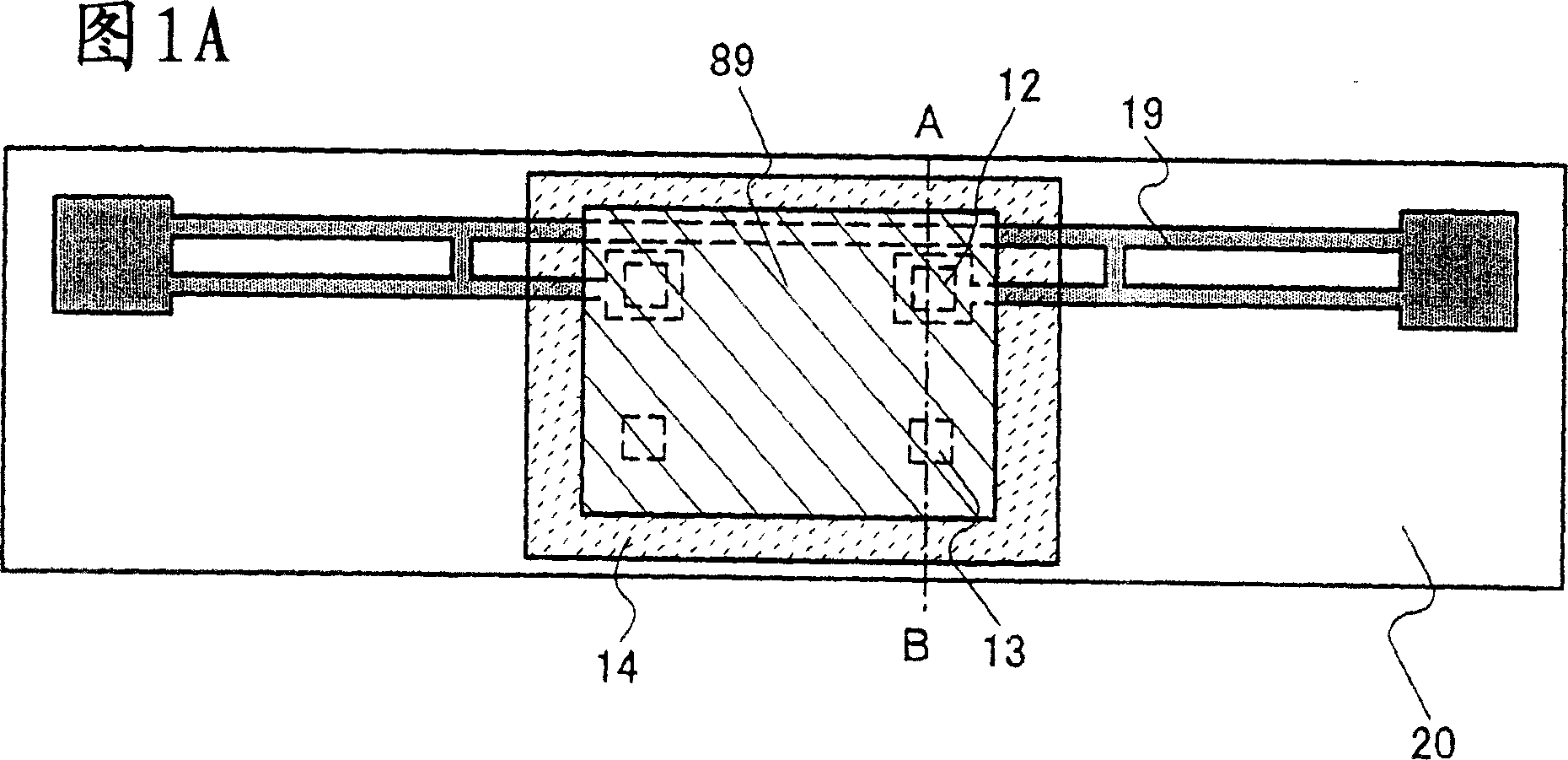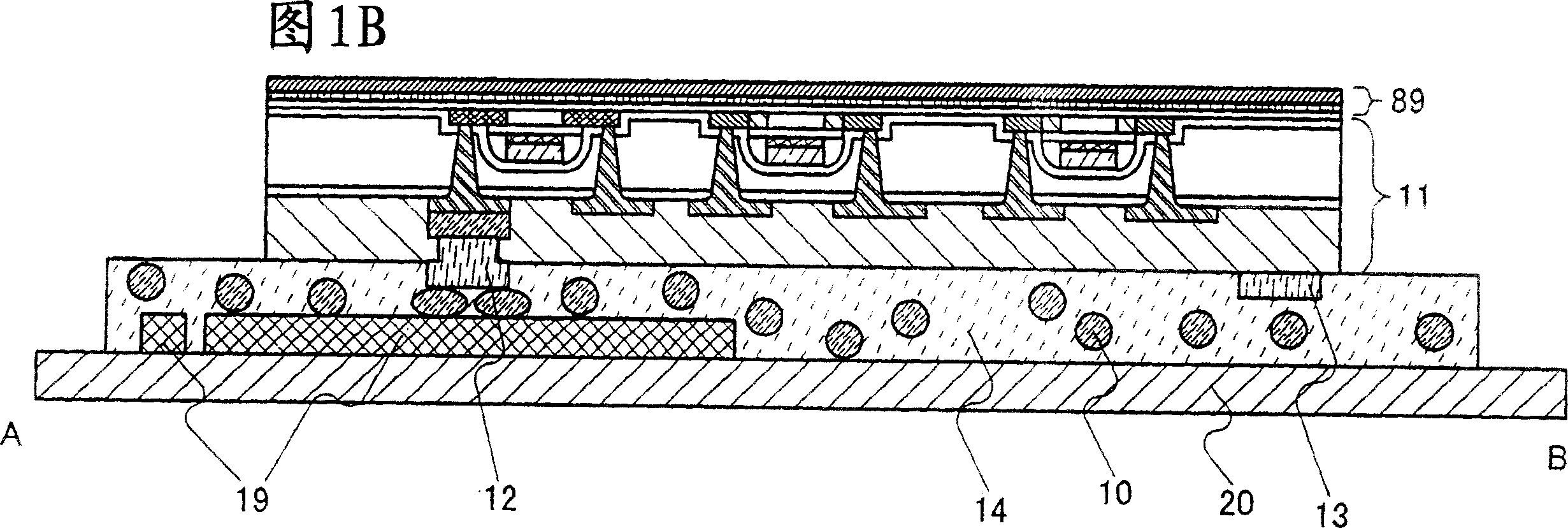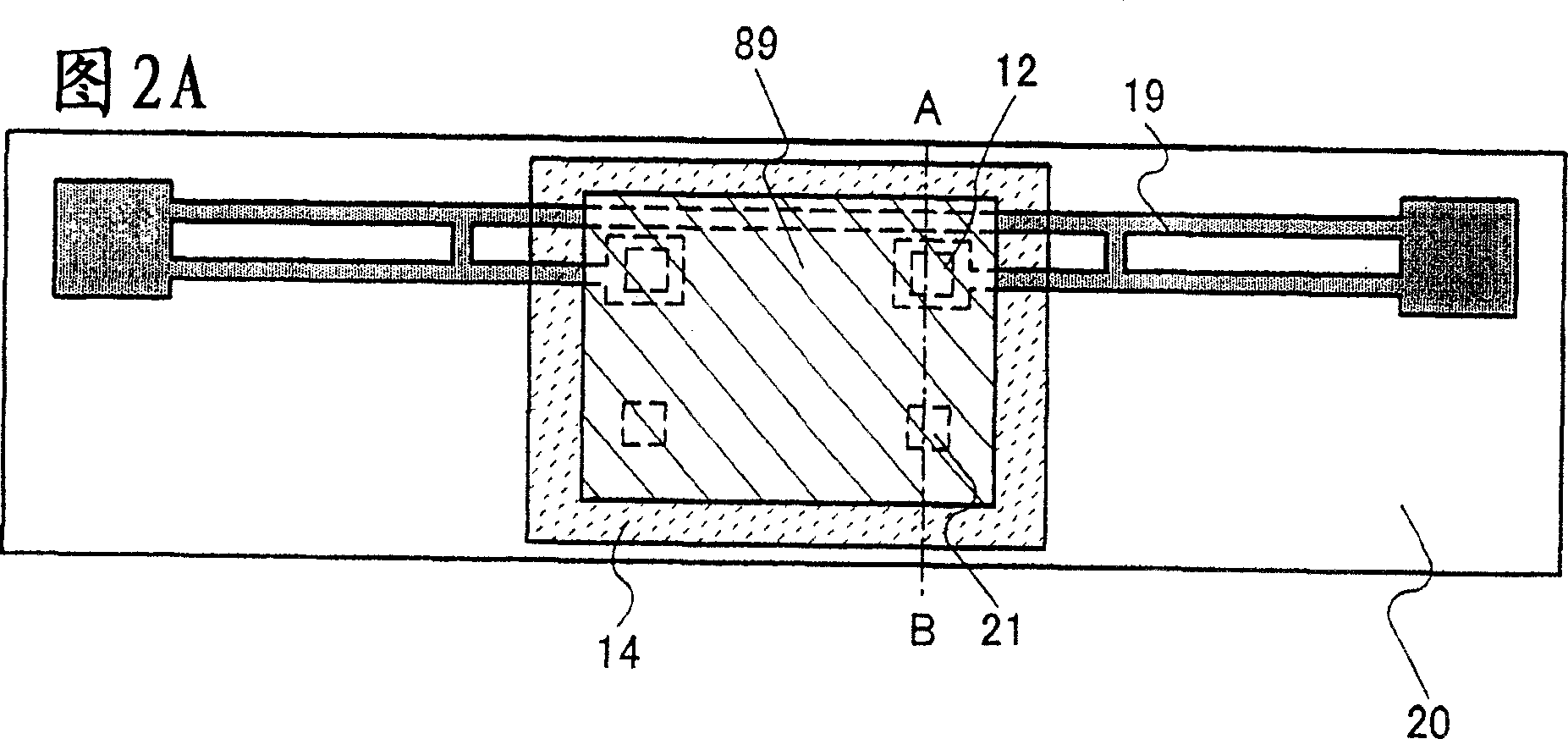Semiconductor device
A semiconductor and conductive layer technology, applied in the direction of semiconductor devices, semiconductor/solid-state device parts, electric solid-state devices, etc., can solve the problems of increasing the number of manufacturing steps, damaging the components themselves, and increasing costs.
- Summary
- Abstract
- Description
- Claims
- Application Information
AI Technical Summary
Problems solved by technology
Method used
Image
Examples
Embodiment approach 1
[0052] With reference to FIGS. 1A and 1B and FIGS. 2A and 2B, the structure of the semiconductor device in this embodiment will be described. FIG. 1B is a cross-sectional view from point A to point B in the top view of FIG. 1A. 2B is a cross-sectional view from point A to point B in the plan view of FIG. 2A.
[0053] The substrate 89 and the substrate 20 are arranged such that one surface of the substrate 89 is opposite to one surface of the substrate 20. A layer 11 having integrated circuits is formed on one surface of the substrate 89 (refer to FIGS. 1B and 2B). In addition, on the layer 11 having the integrated circuit, a terminal 12 electrically connected to the wiring included in the layer 11 having the integrated circuit is provided. Note that the layer 11 with integrated circuits includes a plurality of transistors. In addition, the terminal 12 is electrically connected to a conductive layer 19 that functions as an antenna formed on one surface of the substrate 20 via a con...
Embodiment approach 2
[0059] In this embodiment mode, the structure of a semiconductor device having a different shape from the semiconductor device shown in Embodiment Mode 1 will be described using FIGS. 3A and 3B. The difference between this embodiment mode and the structure shown in Embodiment Mode 1 is that in addition to the conductive layer functioning as an antenna, a conductive layer made of conductive material is provided on the substrate on one surface of the conductive layer functioning as an antenna. Layers of composition. Note that the description of the same parts as in Embodiment 1 will be omitted.
[0060] As shown in FIG. 3A and FIG. 3B, the element of the present invention has a dummy terminal 13 on a layer 11 having an integrated circuit. Note that with regard to the number of dummy terminals and the positions where they are formed, the present invention is not limited to the structure described in the drawings. In other words, one more dummy terminals 13 may be provided, and the pl...
Embodiment approach 3
[0066]The embodiment of the present invention will be described with reference to FIGS. 4A and 4B. In this embodiment mode, a structure of a semiconductor device having a shape different from that in Embodiment Mode 1 and Embodiment Mode 2 will be described. This embodiment is different from Embodiment 1 and Embodiment 2 in the shape of the conductive layer functioning as an antenna, and in addition to the terminals electrically connected to the conductive layer functioning as an antenna, it also has a plurality of conductive layers that are electrically connected to the conductive layer functioning as an antenna. Connected terminal (hereinafter referred to as auxiliary terminal). Note that the description of the same parts as in Embodiment 1 will be omitted.
[0067] As shown in FIGS. 4A and 4B, the layer 11 having the integrated circuit has an auxiliary terminal 24. The auxiliary terminal 24 is electrically connected to the wiring included in the layer 11 having the integrated c...
PUM
 Login to View More
Login to View More Abstract
Description
Claims
Application Information
 Login to View More
Login to View More - R&D
- Intellectual Property
- Life Sciences
- Materials
- Tech Scout
- Unparalleled Data Quality
- Higher Quality Content
- 60% Fewer Hallucinations
Browse by: Latest US Patents, China's latest patents, Technical Efficacy Thesaurus, Application Domain, Technology Topic, Popular Technical Reports.
© 2025 PatSnap. All rights reserved.Legal|Privacy policy|Modern Slavery Act Transparency Statement|Sitemap|About US| Contact US: help@patsnap.com



